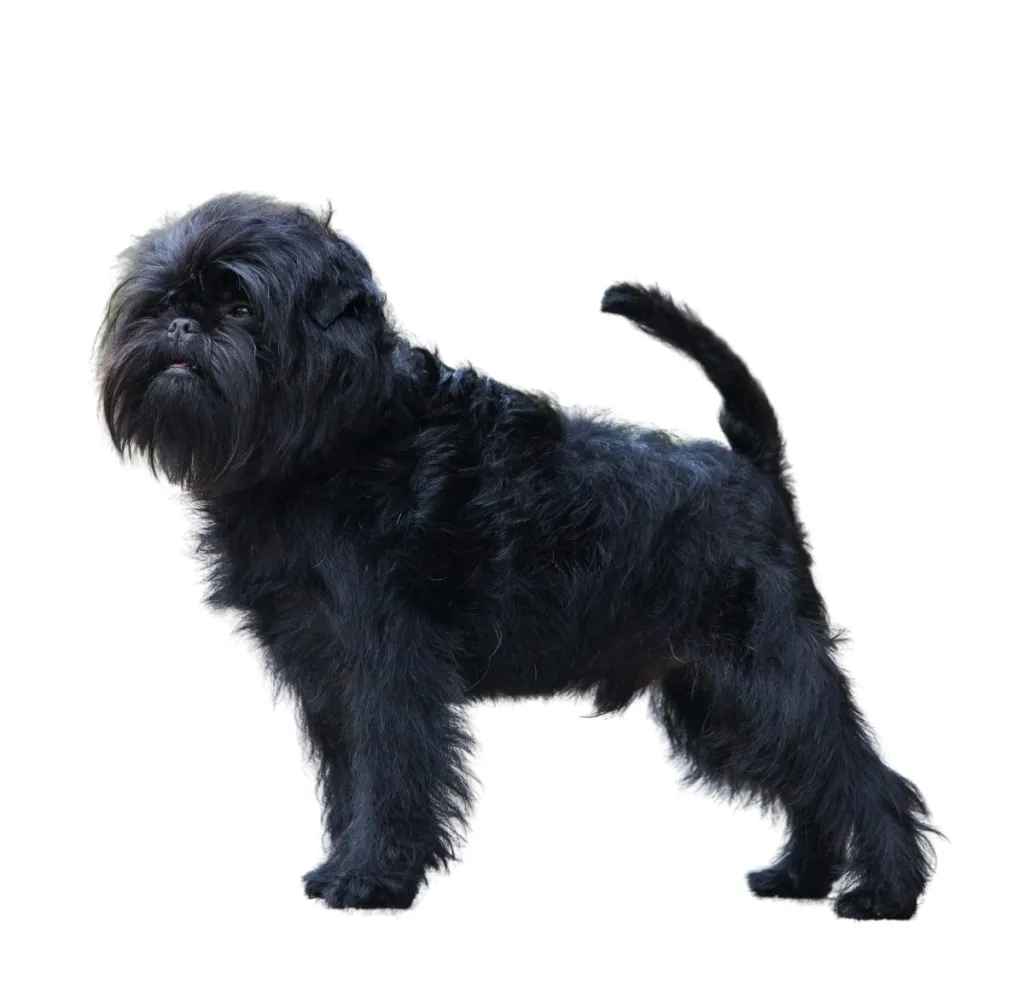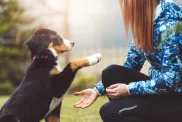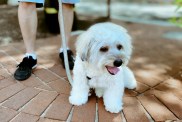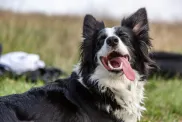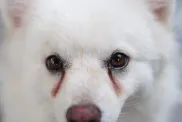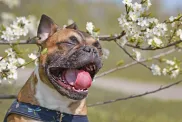The Affenpinscher breed originated as skilled ratters, initially tasked with pest control in homes, stables, and shops. Through selective breeding, their size decreased, leading them to become companion pets. They are known for their mischievous personalities and love to get into trouble. Affenpinschers are also are not afraid to stand up to larger dogs and will often fight back if they feel threatened.
Affenpinschers love their humans but prefer the company of adults. They don’t take well to rough play or being held on a lap for too long. However, they are loving, loyal, and protective dogs that will make great additions to any family.
Quick Facts
- Origin: The breed originated in Germany and was originally used to hunt rats and other vermin.
- Appearance: The Affenpinscher is a small, wiry-haired dog that is known for its monkey-like face. They come in two coat colors: black and brown.
- Temperament: Affenpinschers are intelligent and playful dogs that make good companions. They are also known for being stubborn and independent.
- Health: Affenpinschers are generally healthy dogs, but they are prone to some health problems, such as dental problems, hip dysplasia, eye problems, and Legg-Calve-Perthes disease.
- Size: They typically stand 11 to 12 inches tall and weigh 8 to 10 pounds.
- Lifespan: Affenpinschers have a lifespan of 12 to 15 years.
- The name “Affenpinscher” means “monkey terrier” in German.
- In France, this breed is described as the “Diablotin Moustachu” which means “moustached little devil”.
If you are looking for a small, active dog that will love you unconditionally, the Affenpinscher may be the perfect breed for you.
Affenpinscher Pictures
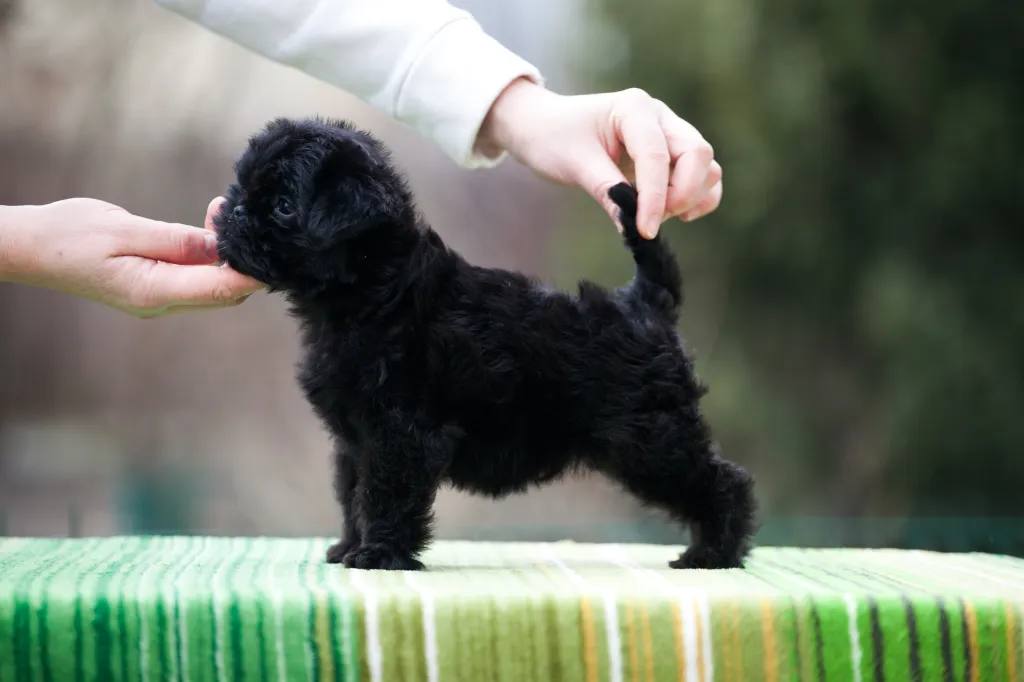
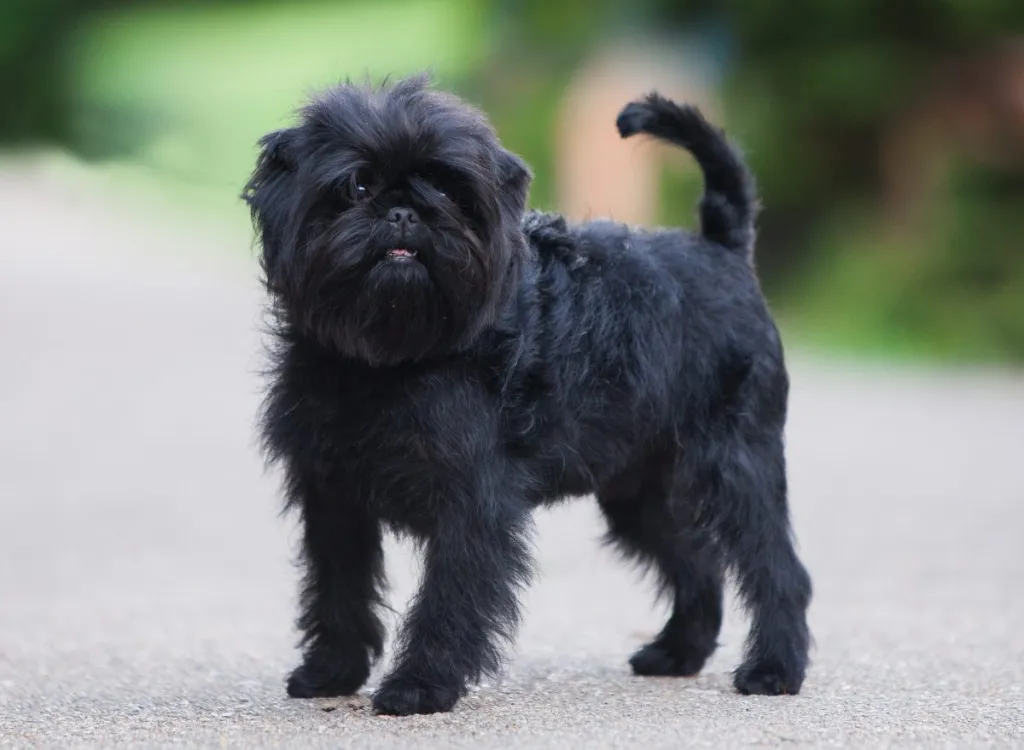
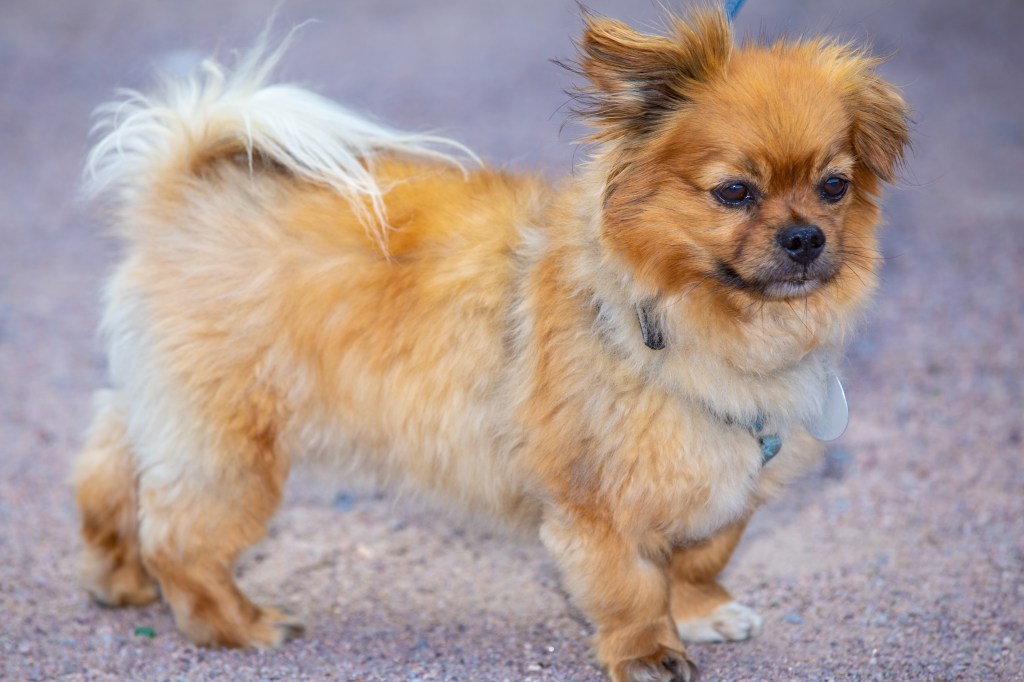
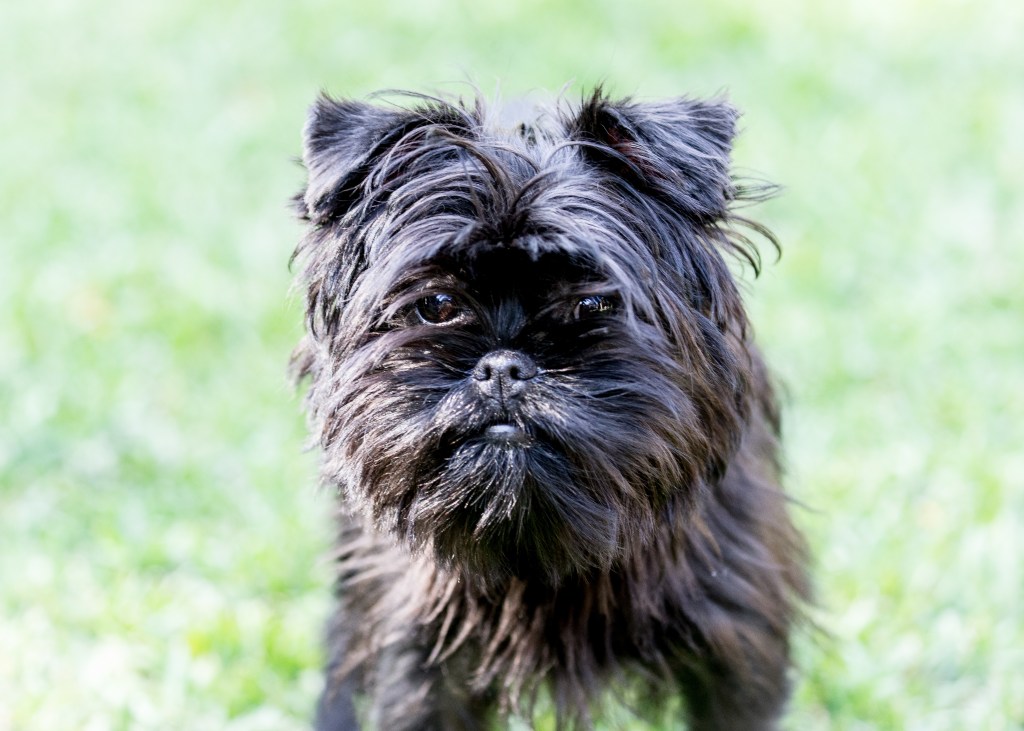
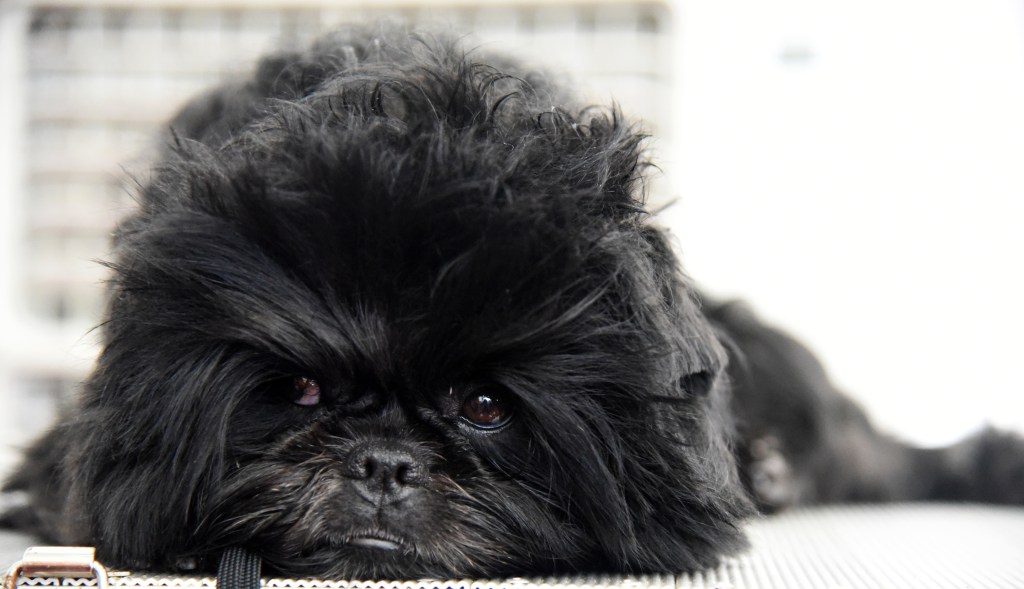
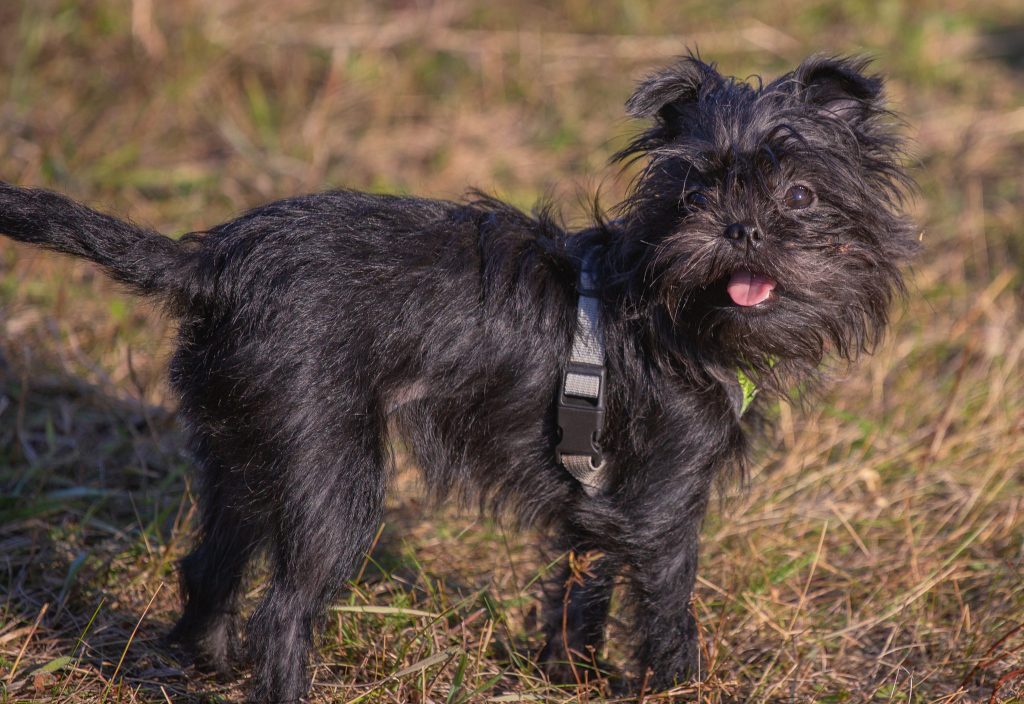
Adaptability
-
Adapts Well To Apartment Living
Looking for the best dog for your apartment? Contrary to popular belief, the suitability of dogs who adapt well to apartment living goes beyond its size. Apartment dwellers have a myriad of dog breeds to choose from as potential companions, with various factors to consider. Some large breeds can adapt well to apartment living and have lower activity levels. Others may require more space and possess higher energy levels. On the other hand, certain small dog breeds with abundant energy can still find contentment with indoor playtime or brisk walks.
However, when selecting a dog that adapts well apartments, it is essential to prioritize your neighbors. Opting for a pet that doesn’t excessively bark and behaves politely when encountering others in shared spaces like is crucial for maintaining a harmonious apartment environment.
In high-rise settings, it’s worth noting that numerous small dogs may exhibit a propensity for high energy and frequent barking. This makes them less suitable for apartment living. Therefore, desirable qualities in an apartment dog encompass being quiet, low-energy, and displaying polite behavior towards other residents.
Factors To Consider When Choosing A Dog For An Apartment
When considering dogs that adapt well to apartments, size alone should not be the sole determinant. Apartment dwellers have a wealth of dog breeds to choose from as potential furry companions. It’s important to remember that the size of your living space is just one factor to consider. While some larger breeds can adapt well to apartment living, with lower, others may require more space and have higher energy levels, making them less suitable for smaller apartments. Conversely, certain small dog breeds with higher energy levels can still thrive in apartments, finding contentment through indoor playtime or brisk walks. However, it is crucial to consider your neighbors’ comfort when selecting a dog. Opt for a pet that doesn’t bark excessively and behaves politely when interacting with others in shared spaces.
Therefore, it’s important to prioritize qualities such as being quiet, low-energy, calm indoors, and exhibiting good manners when living in close proximity to other residents. By considering these factors, you can find a dog that will adapt well to apartment living and create a harmonious living environment for everyone involved.
-
Good For Novice Owners
Some dogs are simply easier than others; they take to training better and are fairly easygoing. They’re also resilient enough to bounce back from your mistakes or inconsistencies.
Dogs who are highly sensitive, independent thinking, or assertive may be harder for a first-time dog parent to manage. You’ll get your best match if you take your dog-owning experience into account as you choose your new pooch.
If you’re new to dog parenting, take a look at 101 Dog Tricks and read up on how to train your dog!
-
Sensitivity Level
Some dogs will let a stern reprimand roll off their backs, while others take even a dirty look to heart. Low-sensitivity dogs, also called “easygoing,” “tolerant,” “resilient,” and even “thick-skinned,” can better handle a noisy, chaotic household, a louder or more assertive owner, and an inconsistent or variable routine. Do you have young kids, throw lots of dinner parties, play in a garage band, or lead a hectic life? Go with a low-sensitivity dog.
-
Tolerates Being Alone
Some breeds bond very closely with their family and are more prone to worry or even panic when left alone by their owner. An anxious dog can be very destructive–barking, whining, chewing, and otherwise causing mayhem. These breeds do best when a family member is home during the day or if you can take the dog to work.
-
Tolerates Cold Weather
Breeds with very short coats and little or no undercoat or body fat, such as Greyhounds, are vulnerable to the cold. Dogs with a low cold tolerance need to live inside in cool climates and should have a jacket or sweater for chilly walks. You can find a great jacket for your dog here!
-
Tolerates Hot Weather
Dogs with thick, double coats are more vulnerable to overheating. So are breeds with short noses, like Bulldogs or Pugs, since they can’t pant as well to cool themselves off. If you want a heat-sensitive breed, your dog will need to stay indoors with you on warm or humid days, and you’ll need to be extra cautious about exercising your dog in the heat.
All-around friendliness
-
Affectionate With Family
When it comes to unconditional love and unwavering loyalty, few animals can rival the affectionate nature of dogs. These remarkable creatures have earned their reputation as man’s best friend, and many breeds are particularly renowned for their love and devotion to their families. With their warm hearts and wagging tails, affectionate family dogs enrich the lives of their owners in countless ways.
One such breed known for its affectionate demeanor is the Golden Retriever. With their gentle temperament and friendly disposition, Golden Retrievers form deep bonds with their families. They eagerly participate in family activities, whether it’s a game of fetch in the yard or cuddling on the couch during a movie night. Their expressive eyes and ever-wagging tails are a testament to the joy they feel in the presence of their loved ones.
Another family-favorite breed is the Labrador Retriever. Renowned for their playful and patient nature, Labradors are excellent companions for children and adults alike. They readily engage in playtime with the kids, showcasing their boundless energy and enthusiasm. But when the day winds down, they seamlessly transition into loving and gentle cuddle buddies, comforting their family members with their warm presence.
Beyond specific breeds, mixed-breed dogs also have a special place in the hearts of families seeking affectionate companions. The shelter dogs, in particular, form deep connections with their adoptive families. They seem to understand the second chance they’ve been given and repay it with endless love and gratitude.
How To Know If A Dog Is Good With Families
The affectionate nature of family dogs extends beyond play and cuddles. Dogs have a remarkable ability to sense their owner’s emotions, offering comfort and support during difficult times. Whether it’s a wagging tail after a long day at work or a sympathetic nuzzle during moments of sadness, they prove time and again that they are attuned to their family’s needs.
It is important to note that not all dogs of the same breed will be equally affectionate. Some dogs may be more independent or aloof, while others may be more clingy or demanding of attention. The best way to find out how affectionate a dog is is to meet them in person and interact with them.
-
Kid-Friendly
Being gentle with children, sturdy enough to handle the heavy-handed pets and hugs they can dish out, and having a blasé attitude toward running, screaming children are all traits that make a kid-friendly dog. You may be surprised by who’s on that list: Fierce-looking Boxers are considered good with children, as are American Staffordshire Terriers (which are considered Pit Bulls). Small, delicate, and potentially snappy dogs such as Chihuahuas aren’t always so family-friendly.
**All dogs are individuals. Our ratings are generalizations, and they’re not a guarantee of how any breed or individual dog will behave. Dogs from any breed can be good with children based on their past experiences, training on how to get along with kids, and personality. No matter what the breed or breed type, all dogs have strong jaws, sharp pointy teeth, and may bite in stressful circumstances. Young children and dogs of any breed should always be supervised by an adult and never left alone together, period.
-
Dog Friendly
Friendliness toward dogs and friendliness toward humans are two completely different things. Some dogs may attack or try to dominate other dogs, even if they’re love-bugs with people; others would rather play than fight; and some will turn tail and run. Breed isn’t the only factor. Dogs who lived with their littermates and mother until at least six to eight weeks of age and who spent lots of time playing with other dogs during puppyhood, are more likely to have good canine social skills.
-
Friendly Toward Strangers
Stranger-friendly dogs will greet guests with wagging tails and nuzzles; others are shy, indifferent, or even aggressive. However, no matter what the breed, a dog who was socialized and exposed to lots of different types, ages, sizes, and shapes of people as a puppy will respond better to strangers as an adult. Remember that even friendly dogs should stay on a good, strong leash like this one in public!
Health And Grooming Needs
-
Amount Of Shedding
If you’re going to share your home with a dog, you’ll need to deal with some level of dog hair on your clothes and in your house. However, shedding does vary greatly among the breeds. Some dogs shed year-round, some “blow” seasonally, some do both, and some shed hardly at all. If you’re a neatnik, you’ll need to either pick a low-shedding breed or relax your standards. To help keep your home a little cleaner, you can find a great de-shedding tool here!
-
Drooling Potential
Drool-prone dogs may drape ropes of slobber on your arm and leave big, wet spots on your clothes when they come over to say hello. If you’ve got a laid-back attitude toward slobber, fine; but if you’re a neatnik, you may want to choose a dog who rates low in the drool department.
-
Easy To Groom
Some breeds are brush-and-go dogs; others require regular bathing, clipping, and other grooming just to stay clean and healthy. Consider whether you have the time and patience for a dog who needs a lot of grooming, or the money to pay someone else to do it.
-
General Health
Due to poor breeding practices, some breeds are prone to certain genetic health problems, such as hip dysplasia. This doesn’t mean that every dog of that breed will develop those diseases; it just means that they’re at an increased risk.
If you’re adopting a puppy, it’s a good idea to find out which genetic illnesses are common to the breed you’re interested in. You may also want to ask if your shelter or rescue has information about the physical health of your potential pup’s parents and other relatives.
-
Potential For Weight Gain
Some breeds have hearty appetites and tend to put on weight easily. As in humans, being overweight can cause health problems in dogs. If you pick a breed that’s prone to packing on pounds, you’ll need to limit treats, make sure they get enough exercise, and measure out their daily food servings into regular meals rather than leaving food out all the time.
Ask your vet about your dog’s diet and what they recommend for feeding your pooch to keep them at a healthy weight. Weight gain can lead to other health issues or worsen problems like arthritis.
-
Size
Get ready to meet the giants of the doggy world! Large dog breeds aren’t just big balls of fluff, they’re like loving, oversized teddy bears on a mission to steal your heart. Need some convincing? Let’s dive into the awesome benefits of owning one!
First things first, these pooches are a living security system! With their impressive size and thunderous barks, they’ll have any would-be intruder running for the hills. Talk about peace of mind! Plus, who needs an alarm when you’ve got a furry giant protecting your castle?
But that’s not all. Large dog breeds are all about loyalty and devotion. They’ll stick by your side through thick and thin, becoming your most dedicated bestie. Their love knows no bounds! When you have a giant fluffball showing you unconditional love, you’ll feel like the luckiest human on the planet.
Now, let’s talk about their talents. These big fellas are the ultimate working partners. With brains and brawn, they’re up for any challenge. From search and rescue missions to lending a helping paw to those in need, these dogs are superheroes in fur coats. They’ll make you proud every step of the way!
Don’t let their size fool you—these gentle giants have hearts as big as their paws. They’re incredible with kids and other pets, spreading their love like confetti. Their patience and kindness make them perfect family pets, ensuring harmony in your household.
Oh, and get ready to break a sweat! These dogs are fitness enthusiasts, and they’ll keep you on your toes. Daily walks, jogs, and play sessions will not only keep them happy and healthy but will also give you a reason to ditch the couch and join in on the fun. It’s a win-win situation!
So, if you’re ready for a dose of big love, go ahead and consider a large dog breed. They’re the best wing-dog you could ever ask for, ready to make your life a thousand times more exciting, loving, and downright awesome! Get ready for the big adventure of a lifetime!
Trainability
-
Easy To Train
Easy-to-train dogs are more adept at forming an association between a prompt (such as the word “sit”), an action (sitting), and a consequence (getting a treat) very quickly. Other dogs need more time, patience, and repetition during training.
Many breeds are intelligent but approach training with a “What’s in it for me?” attitude, in which case you’ll need to use rewards and games to teach them to want to comply with your requests.
Related:
10 Fun, Impressive Tricks You Can Teach Any Dog
-
Intelligence
Dogs who were bred for jobs that require decision making, intelligence, and concentration, such as herding livestock, need to exercise their brains, just as dogs who were bred to run all day need to exercise their bodies. If they don’t get the mental stimulation they need, they’ll make their own work–usually with projects you won’t like, such as digging and chewing. Obedience training and interactive dog toys are good ways to give a dog a brain workout, as are dog sports and careers, such as agility and search and rescue.
-
Potential For Mouthiness
Common in most breeds during puppyhood and in Retriever breeds at all ages, mouthiness means a tendency to nip, chew, and play-bite (a soft, fairly painless bite that doesn’t puncture the skin). Mouthy dogs are more likely to use their mouths to hold or “herd” their human family members, and they need training to learn that it’s fine to gnaw on chew toys, but not on people. Mouthy breeds tend to really enjoy a game of fetch, as well as a good chew on a toy that’s been stuffed with kibble and treats.
-
Prey Drive
Dogs with a high prey drive have an instinctive desire to stalk, capture, and prey upon potential food sources. Dogs who were bred to hunt, such as Terriers, have an inborn desire to chase — and sometimes kill — other animals. Anything whizzing by — such as cats, squirrels, and perhaps even cars — can trigger that instinct.
How to address a high prey drive
Off-leash adventures are too great a temptation for pups who will wander and hunt. Dogs who like to chase need to be leashed. And, even on a leash, you may experience your dog pulling on the leash to reach rodents or birds in their sight. Otherwise, these pups should be kept in a fenced area when outdoors. If your pup has a high prey drive, you’ll need a high, secure fence in your yard.
These breeds generally aren’t a good fit for homes with smaller pets that can look like prey, such as cats, hamsters, or small dogs. Breeds that were originally used for bird hunting, on the other hand, generally won’t chase, but you’ll probably have a hard time getting their attention when there are birds flying by.
Other behavioral concerns
Observing your dog’s prey drive, which is instinctual and biologically-rooted, is not the same as observing aggression. Much aggression is born of fear and anxiety, especially in the case of dog aggression toward humans.
The tendency to wander, even into oncoming traffic, can produce diasterious results for pups with predatory instincts. It can also lead to pups being bitten by snakes or attacked by other wild animals they may pursue while on the hunt.
-
Tendency To Bark Or Howl
Some breeds sound off more often than others. When choosing a breed, think about how often the dog vocalizes. Learn more about breeds with a tendency to bark or howl.
If you’re considering a hound, would you find their trademark howls musical or maddening? If you’re considering a watchdog, will a city full of suspicious “strangers” put your pup on permanent alert? Will the local wildlife literally drive your dog wild? Do you live in housing with noise restrictions? Do you have neighbors nearby? Then you may wish to choose a quieter dog.
-
Wanderlust Potential
Some breeds are more free-spirited than others. Nordic dogs such as Siberian Huskies were bred to range long distances, and given the chance, they’ll take off after anything that catches their interest. And many hounds simply must follow their noses–or that bunny that just ran across the path–even if it means leaving you behind.
Exercise needs
-
Energy Level
High-energy dogs are always ready and waiting for action. Originally bred to perform a canine job of some sort, such as retrieving game for hunters or herding livestock, they have the stamina to put in a full workday. They need a significant amount of exercise and mental stimulation, and they’re more likely to spend time jumping, playing, and investigating any new sights and smells.
Low-energy dogs are the canine equivalent of a couch potato, content to doze the day away. When picking a breed, consider your own activity level and lifestyle, and think about whether you’ll find a frisky, energetic dog invigorating or annoying.
-
Intensity
A vigorous dog may or may not have high energy, but everything they do, they do with vigor: they strain on the leash (until you train them not to), try to plow through obstacles, and even eats and drinks with great big gulps. These dynamos need lots of training to learn good manners, and may not be the best fit for a home with young kids or someone who’s elderly or frail. A low-vigor dog, on the other hand, has a more subdued approach to life.
-
Exercise Needs
Some breeds do fine with a slow evening stroll around the block. Others need daily, vigorous exercise, especially those that were originally bred for physically demanding jobs, like herding or hunting.
Without enough exercise, these breeds may put on weight and vent their pent-up energy in ways you don’t like, such as barking, chewing, and digging. Breeds that need a lot of exercise are good for outdoorsy, active people, or those interested in training their dog to compete in a high-energy dog sport, such as agility.
-
Potential For Playfulness
Some dogs are perpetual puppies — always begging for a game — while others are more serious and sedate. Although a playful pup sounds endearing, consider how many games of fetch or tag you want to play each day, and whether you have kids or other dogs who can stand in as playmates for the dog.
Affenpinscher Overview
The Affenpinscher, also known as the “Monkey Dog” (“affen” means “ape/monkey” in German, and “pinscher” means “terrier”), is small but feisty, full of spunk and energy. This mustachioed little devil is descended from the numerous small terriers that populated 17th and 18th century stables and shops throughout Europe, ridding them of rats and mice.
Some of the intelligent, wiry-haired dogs must have caught the eye of ladies, because eventually they were bred to be smaller, the better to be a companion dog. Today the Affenpinschers is a rare breed, but he came to public notice in 2002 when Ch. Yarrow’s Super Nova won the Toy Group in 2002 at the nationally televised Westminster Kennel Club Show. This breed combines clown-like charm with a bold nature, and his creative thought process never ceases to astound and entertain his people. He learns quickly and adjusts readily to change, so he’s a good traveler who’s always ready for a new adventure.
People who live with Affenpinschers admire their sensitivity and gentleness but warn that they are the quintessential big dog in a small body. Sturdy, smart, and alert, the Affenpinscher is an excellent watchdog who fears nothing. He’s not normally loud, but he is excitable. Once he’s on alert, it takes a while for him to calm down. He takes seriously his duty to guard home, family, and territory, and won’t hesitate to alert the entire neighborhood that someone is approaching the front door.
Frequent socialization with other people and animals is a must for the Affenpinscher to grow up to be a balanced adult. The Affenpinscher has a mind of his own and is often labeled as stubborn. He needs early and consistent training. Fortunately, he’s eager to learn and to please his people when he’s taught with positive reinforcement techniques such as praise, play, and food rewards. He can compete in obedience and agility, and his entertainment ability makes him a wonderful therapy dog.
While Affenpinschers are known for making their people laugh, they are not the best breed for a household full of children in spite of their antics. They aren’t known to particularly like children, and they won’t hesitate to bite if provoked. The Affenpinschers is a character, and that’s part of his appeal.
Consider the Affenpinscher if you’re interested in a small dog who enjoys seeing the sights, is an excellent watchdog, and will always make you laugh.
Affenpinscher Highlights
- Small and sturdy: Affenpinschers are small dogs, typically standing 11 to 12 inches tall and weighing 8 to 10 pounds. They are sturdy and muscular, with a compact body.
- Wiry coat: Affenpinschers have a wiry coat that requires regular brushing and grooming. The coat can be black, brown, or a combination of the two.
- Alert and intelligent: Affenpinschers are alert and intelligent dogs. They are easy to train and make good watchdogs.
- Loyal and affectionate: Affenpinschers are loyal and affectionate dogs. They love their families and make great companions.
- Stubborn and independent: Affenpinschers can be stubborn and independent. They require firm and consistent training.
- Healthy breed: Affenpinschers are generally healthy dogs. However, they are prone to some health problems, such as dental problems, hip dysplasia, and eye problems.
- Rare breed: The Affenpinscher is a rare breed. Be prepared to spend time on a waiting list if you’re interested in acquiring one.
Affenpinscher History
The Affenpinscher’s lineage traces back to at least the 17th century, with more reliable records appearing in the late 19th century. Dutch artists’ paintings from the 15th century depict small, bearded dogs with rough coats, potentially among the Affenpinscher’s ancestors. Originating in Germany, these terrier-type dogs were prized for their rat-catching skills, finding roles in stables, shops, farms, and homes across Central Europe.
The appeal of these intelligent, wiry-haired dogs led to their breeding for smaller size, ideal as companion dogs, particularly for ladies. Although the credit for miniaturizing the ratters is often attributed to a breeder in Lubeck, Germany, like many breeds, the precise origins of the Affenpinscher remain shrouded in history.
They may have been crossed with Pugs and German Pinschers. Affenpinscher-type dogs also contributed to the development of other breeds, including the Brussels Griffon and the Miniature Schnauzer. It’s easy to see their relationship when you look at their rough coats and bearded faces.
The city of Munich was the heart of early Affenpinscher development, but the breed was also popular elsewhere in Germany. The Berlin Lapdog Club began to formulate a breed standard for the Affenpinscher in 1902, but the true breed standard was not finalized until 1913. This standard, translated to English, was adopted by the American Kennel Club and the Affenpinscher was officially entered into the AKC Stud Book in 1936. The first Affenpinscher registered with the AKC was named Nollie v. Anwander, one of four German imports belonging to Bessie Mally of Cicero, Illinois. World War II interrupted the breeding of the Affenpinscher in the United States. It wasn’t until the 1950s that interest in the breed revived. He is still rare today, although he gained a bit of celebrity in 2002 when Ch. Yarrow’s Super Nova won the Toy Group in 2002 at the nationally televised Westminster Kennel Club Show. The Affenpinscher ranks 125th among the breeds and varieties recognized by the American Kennel Club.
Affenpinscher Size
Affenpinschers are 9.5 to 11.5 inches tall and weigh 7 to 9 pounds.
Affenpinscher Personality
The Affen is affectionate and curious, always on the alert. He’s loyal to his family and will do his tiny best to protect them from harm. It’s important to prevent him from taking on dogs ten times his size. He’s excitable and can take a while to calm down in the face of anything he views as a threat.
Like every dog, Affenpinschers need early socialization — exposure to many different people, sights, sounds, and experiences — when they’re young. Socialization helps ensure that your Affenpinscher puppy grows up to be a well-rounded, outgoing, friendly dog and stays that way. Enrolling him in a puppy kindergarten class is a great start. Inviting visitors over regularly, and taking him to busy parks, stores that allow dogs, and on leisurely strolls to meet neighbors will also help him polish his social skills.
Affenpinscher Health
Affenpinschers are generally healthy, but like all breeds, they’re prone to certain health conditions. Not all Affens will get any or all of these diseases, but it’s important to be aware of them if you’re considering this breed.
- Patellar Luxation: Also known as “slipped stifles,” this is a common problem in small dogs. It is caused when the patella, which has three parts–the femur (thigh bone), patella (knee cap), and tibia (calf)–is not properly lined up. This causes lameness in the leg or an abnormal gait, sort of like a skip or a hop. It is a condition that is present at birth although the actual misalignment or luxation does not always occur until much later. The rubbing caused by patellar luxation can lead to arthritis, a degenerative joint disease. There are four grades of patellar luxation, ranging from grade I, an occasional luxation causing temporary lameness in the joint, to grade IV, in which the turning of the tibia is severe and the patella cannot be realigned manually. This gives the dog a bowlegged appearance. Severe grades of patellar luxation may require surgical repair.
- Legg-Perthes Disease: Generally a disease of small breeds, this condition–a deformity of the ball of the hip joint–usually appears at 6 to 9 months of age and can be confused with hip dysplasia. It causes wearing and arthritis. It can be repaired surgically, and the prognosis is good with the help of rehabilitation therapy afterward.
- Hip Dysplasia: This is a heritable condition in which the thighbone doesn’t fit snugly into the hip joint. Some dogs show pain and lameness on one or both rear legs, but you may not notice any signs of discomfort in a dog with hip dysplasia. As the dog ages, arthritis can develop. X-ray screening for hip dysplasia is done by the Orthopedic Foundation for Animals or the University of Pennsylvania Hip Improvement Program (PennHIP). Dogs with hip dysplasia should not be bred. If you’re buying a puppy, ask the breeder for proof that the parents have been tested for hip dysplasia and are free of problems. Hip dysplasia is hereditary, but it can also be triggered by environmental factors, such as rapid growth from a high-calorie diet or injuries incurred from jumping or falling on slick floors.
- Heart Murmurs: Heart murmurs are caused by a disturbance in the blood flow through the chambers of the heart. They’re an indicator that there may be a disease or condition of the heart that will need to be monitored and treated.
If you’re buying a puppy, find a good breeder who will show you health clearances for both your puppy’s parents. Health clearances prove that a dog has been tested for and cleared of a particular condition. In Affenpinschers, you should expect to see health clearances from the Orthopedic Foundation for Animals (OFA) for hip dysplasia (with a score of fair or better), elbow dysplasia, hypothyroidism, and von Willebrand’s disease; from Auburn University for thrombopathia; and from the Canine Eye Registry Foundation (CERF) certifying that eyes are normal. You can confirm health clearances by checking the OFA web site (offa.org).
Affenpinscher Care
The Affenpinscher is an ideal dog for apartment living, especially if you have neighbors who don’t mind occasional barking. Short, brisk walks or a suitable length of time in the backyard is enough exercise for this sturdy but only moderately active dog. Because they’re so small, the Affenpinscher should be a full-time housedog, with access only to a fully fenced backyard when not supervised.
These dogs won’t hesitate to confront animals much larger than themselves, an encounter that could result in tragedy. Like many toy breeds, the Affenpinscher can be difficult to housetrain. Be patient and consistent. Crate training is recommended. The key to training an Affenpinscher is to always keep training fun. Use lots of praise and motivation!
Affenpinscher Feeding
Recommended daily amount: 1/4 to 1/2 cup of high-quality dry food a day, divided into two meals. NOTE: How much your adult dog eats depends on his size, age, build, metabolism, and activity level. Dogs are individuals, just like people, and they don’t all need the same amount of food. It almost goes without saying that a highly active dog will need more than a couch potato dog.
The quality of dog food you buy also makes a difference–the better the dog food, the further it will go toward nourishing your dog and the less of it you’ll need to shake into your dog’s bowl. Keep your Affenpinscher trim by measuring his food and feeding him twice a day rather than leaving food out all the time.
If you’re unsure whether he’s overweight, give him the eye test and the hands-on test. First, look down at him. You should be able to see a waist. Then place your hands on his back, thumbs along the spine, with the fingers spread downward. You should be able to feel but not see his ribs without having to press hard. If you can’t, he needs less food and more exercise. For more on feeding your Affenpinscher, see our guidelines for buying the right food, feeding your puppy, and feeding your adult dog.
Affenpinscher Coat Color And Grooming
Shaggy but neat describes the Affenpinscher’s desired appearance. He has a thick, rough coat with a harsh texture, approximately one inch long on the body, shorter on the rump and tail, and longer and shaggier on the head (where it contributes to the monkeylike expression), neck, chest, stomach, and legs. The longer fur around the head and shoulders resembles a cape. Affens don’t shed much, but their rough coat must be stripped to maintain its characteristic texture. You’ll find the Affenpinscher dressed in black, gray, silver, black and tan, or red, which ranges from brownish to an orangey tan. Some red Affenpinschers have black, brown, or white hair mixed in with the red, along with tan furnishings, and some black Affenpinschers have a few white or silver hairs mixed in. The furnishings–the longer hair–may be a bit lighter than the rest of the body. In Europe, Affenpinschers come only in black, sometimes with a light frosting of gray.
To maintain the shaggy but neat appearance, brush your pup weekly with a small slicker brush, then comb him with a metal “greyhound” comb. Use your fingers to gently break up any mats or tangles you come across. It can help to spray them with a detangler solution first. There’s a lot more to trimming and stripping the Affenpinschers coat to achieve his distinctive appearance, but it’s easily learned. Be patient and persistent while grooming them, and you’ll both be happy with the results.
Other grooming needs include dental hygiene and nail care. Like most small breeds, Affens have issues with periodontal disease. Brush their teeth several times a week to help remove tartar and bacteria. Daily is best. Trim nails once or twice a month if your dog doesn’t wear them down naturally. If you can hear them clicking on the floor, they’re too long. Short, neatly trimmed nails keep the feet in good condition and prevent your legs from getting scratched when your Affenpinscher enthusiastically jumps up to greet you. Begin accustoming your Affenpinscher to being brushed and examined when he’s a puppy. Handle his paws frequently — dogs are touchy about their feet — and look inside his mouth and ears.
Make grooming a positive experience filled with praise and rewards, and you’ll lay the groundwork for easy veterinary exams and other handling when he’s an adult. As you groom, check for sores, rashes, or signs of infection such as redness, tenderness, or inflammation on the skin, in the ears, nose, mouth, and eyes, and on the feet. Ears should smell good, without too much wax or gunk inside, and eyes should be clear, with no redness or discharge. Your careful weekly exam will help you spot potential health problems early.
Affenpinscher Children And Other Pets
Affenpinschers don’t like aggressive behavior such as hitting, unwanted squeezing or hugging, or chasing to catch them or cornering them to hold in a lap. If they can’t escape, they will defend themselves by growling or snapping. For these reasons, they are not good choices for homes with young children. Often young children don’t understand that a cute little Affenpinscher might not want “love and kisses.” It’s a good idea to socialize any puppy to young children, even if he won’t be living with them, but you should always supervise their interactions. Never let young children pick up a puppy or small dog. Instead, make them sit on the floor with the dog in their lap.
Pay attention to the dog’s body language, and put him safely in his crate if he appears to be unhappy or uncomfortable with the child’s attention. Always teach children how to approach and touch dogs, and always supervise any interactions between dogs and young children to prevent any biting or ear or tail pulling on the part of either party. Teach your child never to approach any dog while he’s eating or sleeping or to try to take the dog’s food away. No dog should ever be left unsupervised with a child.
Affenpinschers usually get along well with other dogs and cats in the family, but like most toy breeds they are completely unaware of their size and will take on dogs much bigger than themselves. Be prepared to protect them from themselves.
Affenpinscher Rescue Groups
Affenpinschers are sometimes bought without any clear understanding of what goes into owning one. These dogs may wind up in need of adoption or fostering.
Affenpinscher Breed Organizations
Finding a reputable dog breeder is one of the most important decisions you will make when bringing a new dog into your life. Reputable breeders are committed to breeding healthy, well-socialized puppies that will make great companions. They will screen their breeding stock for health problems, socialize their puppies from a young age, and provide you with lifetime support.
On the other hand, backyard breeders are more interested in making a profit than in producing healthy, well-adjusted dogs. They may not screen their breeding stock for health problems, and they may not socialize their puppies properly. As a result, puppies from backyard breeders are more likely to have both health and behavioral issues
